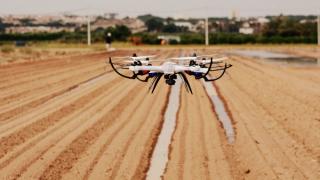One of the areas of focus in President Trump’s ‘Tech Week’ last month was the emerging technology of unmanned aircraft systems, known in Australia as remotely piloted aircraft (or more popularly – drones).
The Federal Aviation Administration (FAA) estimates there are currently 1.1 million hobby drones in the United States with projections this will triple over the next five years. Commercial drones are projected to grow by ten times over the same time period, growing to somewhere between 420,000 and 1.6 million. The market size for commercial drone use is estimated by PwC as $127bn globally, with the best prospects in infrastructure, agriculture and transport. In Australia, mining giants BHP Billiton and Rio Tinto have been using drones for the last few years to improve safety, inspect plant and equipment and reduce the use of scaffolding. BHP are saving A$5 million a year in Queensland alone by using drones instead of planes for survey work. Another mining company, South32 is trialing autonomous drones in Western Australia.
The clear commercial application of drone technology, the rapidly developing innovative uses of drones and the implication for existing airspace regulations requires regulators to respond appropriately. Earlier this year a US Senate Committee hearing on unmanned aircraft systems covered issues of drone privacy, drone delivery, agriculture and use of drones in law enforcement. While Chairman Thune reportedly recognised “the industry, from manufacturers to software developers to practical users, continues to innovate”, safety was a key theme.
In the United States, commercial drones up to 25kg (55lbs) must stay within line-of-sight, are restricted to flying during the day only, under 120 metres (400 feet) at less than 160kph (100mph) and not over people or from a moving vehicle. They are restricted to Class G airspace (meaning no Air Traffic Control service) and pilots must have a Remote Pilot Airman Certificate.
Looking to the future, more than 50 partners (including a few who attended the Tech Week meeting) are working with NASA to test technologies for low-altitude drones looking at airspace design, dynamic geofencing and terrain avoidance. In June tests of the unmanned aircraft systems traffic management technologies took place at six US sites. The tests focused on flying small drones well beyond the pilot’s visual line-of-sight for cases including package deliveries, farmland surveys and search and rescue operations. Later this year the next research phase will fly drones in airspace with more traffic over populated areas and have a stronger focus on responding to the presence of larger, piloted aircraft.
However it seems from reported comments about the meeting with President Trump that US drone industry players are not entirely happy with the speed of policy developments in this space. Recode reports Greg McNeal co-founder of AirMap, a company that makes mapping and alert software to manage drone flights, asked “why autonomous cars weighing 3,500 pounds can drive next to hundreds of pedestrians, but a three-pound drone can’t fly over people”.
Executives attending the meeting with President Trump also reportedly highlighted the more flexible regulations of Australia in relation to drone technology as a driver of drone technology innovation. Prior to the meeting with President Trump, a closed meeting was held between the drone industry representatives and regulators from the FAA and Department of Transportation. Given the similarity between many of the regulations on commercial drone operation, any developments in the United States will no doubt be followed closely here in Australia.






